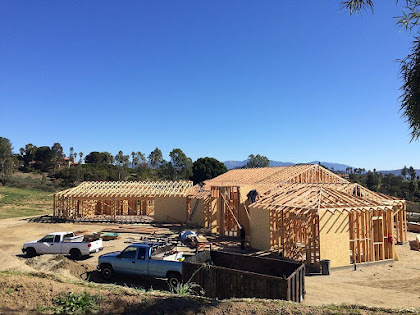How Are Trusses Manufactured?
Many
builders use both roof and Floor trusses in San Diego homes and businesses for
their convenience and cost-savings. In
fact, Truss manufacturers in San
Diego have grown in number in recent years due to the boom in
building and the demand for even more truss products. However, very few people, including many
builders, really understand exactly what happens during the truss manufacturing
process. Here is a quick overview of the
steps to creating sturdy floor and roof trusses.
· Step 1: Design. Before any wood is cut or any nails or screws are driven, it is important to know that the truss to be made is designed precisely to the builder’s specifications. This is done by calculating the roof pitch, load limits and measurements and crafting a truss that meets standards for that particular building. Most trusses are designed with a horizontal chord that spans the width of the roof, two upper chords angled to the roof’s peak, and crossmembers arranged in triangles that provide strength and support. However, there are trusses that are built in different shapes, depending on the needs of the design. The precise dimensions of the truss, as well as the number of cross members, depends on the requirements for load and other factors.
· Step 2: Cut boards to size. These cuts must be precise, because the angles they form will determine the strength and shape of the finished truss. It is important to design trusses to within a very small margin of error and to cut accurately. After the boards are cut, they are fitted together to ensure proper alignment and correct any mistakes before attaching them to each other. This allows the manufacturer to spot problems and also to recut any boards that do not meet standards, are bowed or have other defects.
·
Step 3:
Attach boards with gussets. Metal
gussets, or plates that have many small teeth, are attached to the boards. These gussets hold the boards together by
distributing the force, rather than having all the connection rely on a single
screw or nail. They provide stability
for the truss and help it keep its shape.
·
Step 4:
Quality check. Each truss must be
visually inspected after production as well as subject to stress tests and
other measures to ensure that the trusses will remain sturdy for years to come.
Quality testing is what sets a great
truss manufacturer apart from those that do not produce a quality product, so
it is important for you to choose a truss manufacturer that takes quality
control seriously.
Whether
you are looking for Roof
Truss Manufacturers in San Diego or surrounding areas, Stone Truss
is the company to call. We have been
providing safe, strong and effective truss solutions for floors and roofs to
contractors for decades, and we have the right trusses for your needs,
too. Give us a call so we can discuss your
roofing and flooring needs and find solutions to fit your requirements and your
budget.



Comments
Post a Comment